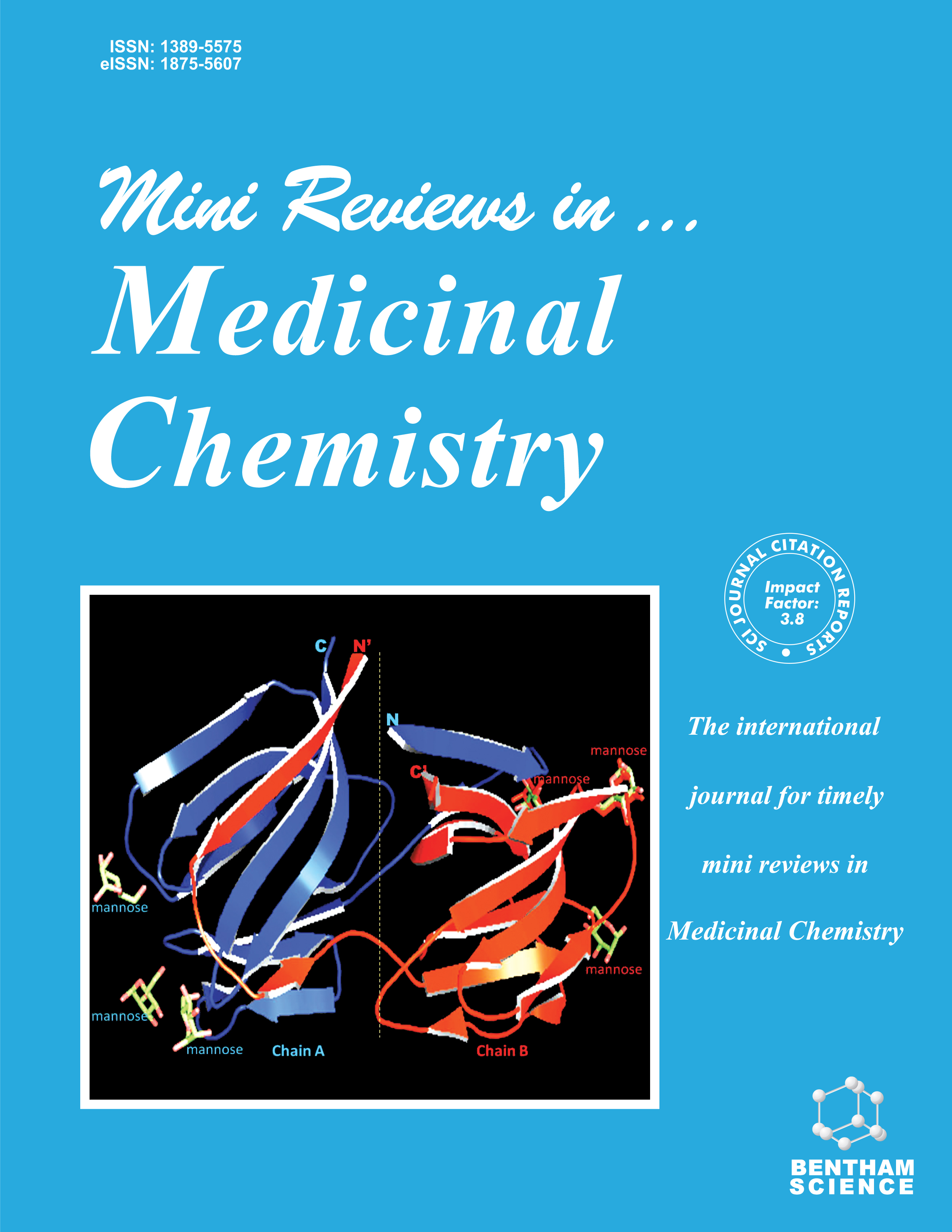Mini Reviews in Medicinal Chemistry - Volume 16, Issue 18, 2016
Volume 16, Issue 18, 2016
-
-
The Use of Biomarkers for Bladder Cancer Diagnosis and Surveillance
More LessAuthors: Bernhard Grubmüller, Morgan Roupret, Alberto Briganti and Shahrokh F. ShariatBladder cancer - a propensity that is associated with high recurrence and mortality rates. Various molecular alterations are reflected by diverse cellular morphological manifestations and vast tumor heterogeneity. Many biomarkers have been described that have undergone clinical trials and are approved for clinical use, but most still remain investigational. The question how molecular markers can support surveillance of different patient groups is still a matter of controversy. However, it can be expected that major advancement in the understanding of molecular pathways involved in urothelial carcinogenesis will enable improved patient management. The scope of this review is to discuss the established diagnostic tests and urinary biomarkers and their application for screening and surveillance of bladder cancer.
-
-
-
The Chemistry of Galanthamine. Classical Synthetic Methods and Comprehensive Study on its Analogues
More LessAuthors: Péter Keglevich, Csaba Szántay and Lászlo HazaiGalanthamine as an Amaryllidaceae alkaloid has an important role in the treatment of Alzheimer’s disease. Some efforts were made to elaborate the total synthesis, and hundreds of its derivatives were prepared to find a more effective molecule with advantageous properties. Moreover, almost every part of the tetracycle was changed; in members of the rings, in the nature and position of the heteroatoms, and ring-opened analogues were also synthesized. In this review the basic synthetic works and the most important derivatives and analogues are overviewed.
-
-
-
Review: The Role of MOP and DOP Receptors in Treatment of Diarrheapredominant Irritable Bowel Syndrome
More LessDiarrhea-predominant irritable bowel syndrome (IBS-D) is a frequent functional disorder of the gastrointestinal (GI) tract affecting nearly one fifth of the worldwide population. IBS-D is associated with numerous symptoms including diarrhea, bloating, abdominal pain and discomfort, which significantly reduce patients’ quality of life. Due to a complex and unclear pathogenesis, effective therapy against IBS-D has not been developed yet. Nowadays, treatment is focused on non-pharmacological (e.g. changes in diet and life style) and pharmacological (e.g. loperamide, ramosetron, rifaximin) approaches. The endogenous opioid system is responsible for the maintenance of homeostasis in the GI tract. Activation of the intestinal opioid receptors (ORs), in particular μ (MOP) and δ (DOP) results in reduction of epithelial secretion and increase of water/electrolyte absorption; moreover, opioids are strong analgesic agents. Thus, ligands of ORs are a promising target in IBS-D treatment. In this review, we discuss the role of ORs in the pathogenesis of IBS-D and the use of “classical” and novel, such as P-317, eluxadoline and biphalin MOP and DOP receptor ligands in preclinical and clinical trials.
-
-
-
Indole based Tubulin Polymerization Inhibitors: An Update on Recent Developments
More LessAuthors: Dhanya Sunil and Pooja R. KamathThe exploration of cancer microenvironment and its physiology have exposed a number of potential molecular targets for selective therapeutic intervention by anti-cancer agents. Microtubules are basic cell components formed by polymerization of αβ heterodimers which play a pivotal role in cellular functions as well as cell division. Drugs that can control the microtubule assembly either by hindering tubulin polymerization or by obstructing microtubule disassembly are of great importance in anti-cancer therapy. Diverse classes of naturally occurring as well as synthetic and semi-synthetic compounds with an indole nucleus induce microtubule polymerization and depolymerization and thereby change tubulin dynamics. Rapid development of several novel tubulin polymerization inhibitors has been observed over the past few years and some of them have associated vascular disrupting properties too. The present review starts with the structure, function and importance of microtubules in a eukaryotic cell. The well characterized tubulin binding domains and the corresponding inhibitors including their mechanism of action is also a part of this article. The report mainly focuses on the brief synthetic methodology with the relevant SAR studies of different indole derived molecules that have been reported in the past few years as potential inhibitors of tubulin polymerization is discussed. This review will provide the up-to-date evidence-base for synthetic chemists as well as biologists to design and synthesize new active molecules to inhibit tubulin polymerization.
-
-
-
Hybrid Bioactive Heterocycles as Potential Antimicrobial Agents: A Review
More LessAuthors: Nisheeth Desai, Amit Trivedi, Unnat Pandit, Amit Dodiya, V. Kameswara Rao and Priyanka DesaiThe ever increasing cases of microbial resistance pose a major threat to the scientific community and therefore the need for discovery and development of newer antimicrobial agents with novel mode of action is becoming critical. One of the ways to tackle this herculean problem is to generate hybrid molecules by combining two or more bioactive heterocyclic moieties in a single molecular platform. The review here describes published results of our research group’s endeavors towards development of potential new and safe antimicrobial agents with better effectiveness by using the hybrid approach. In the present review article the landscaping of heterocycles like 4-thiazolidinones, benzimidazole and quinoline are described. Compounds displaying two of more fold antimicrobial activity are included in the review.
-
Volumes & issues
-
Volume 25 (2025)
-
Volume 24 (2024)
-
Volume 23 (2023)
-
Volume 22 (2022)
-
Volume 21 (2021)
-
Volume 20 (2020)
-
Volume 19 (2019)
-
Volume 18 (2018)
-
Volume 17 (2017)
-
Volume 16 (2016)
-
Volume 15 (2015)
-
Volume 14 (2014)
-
Volume 13 (2013)
-
Volume 12 (2012)
-
Volume 11 (2011)
-
Volume 10 (2010)
-
Volume 9 (2009)
-
Volume 8 (2008)
-
Volume 7 (2007)
-
Volume 6 (2006)
-
Volume 5 (2005)
-
Volume 4 (2004)
-
Volume 3 (2003)
-
Volume 2 (2002)
-
Volume 1 (2001)
Most Read This Month


